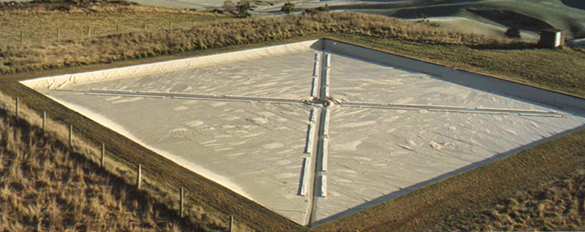Geomembrane Covers / Floating Covers
Floating Cover Design Principles
Floating covers must function correctly at all operational water levels, hence their oscillating design. The key to achieving a well-balanced oscillating floating cover is to ensure that the tension of the cover is maintained at all times. Ballast lines bordered by floats must be configured correctly so that as the reservoir fills, the ballast lines the excess material and forms rainwater sumps. Rainwater which collects in these sumps is then pumped away.

Cover Materials
As one of Australia's leading geomembrane lining companies with QA/QC accreditation (ISO9001:2000), Fabtech is committed to ensuring that all materials and workmanship reflect the stringent Quality Control conditions of such accreditation. Fabtech regularly assesses new and existing material suppliers and is able to recommend the appropriate material for a particular application.
Installation Techniques
The secret to the successful floating cover installation and longevity of a floating cover lies in the ratio between thermal welding techniques carried out in-house and those on site. In-house welders differ from on-site welders due to the surface on which geomembrane panels are welded.
- In a controlled factory situation, the factory floor allows the sheets to be set up with the exact overlap to weld the seam. Factory fabricated seams are 60mm wide, as opposed to on-site seams which are only 40mm wide.
- On-site seams by necessity have large overlaps on the underside of the cover, resulting in the risk of impregnation of foreign matter and bacteria. The result is increased maintenance costs and risk of water contamination.
- Quality Control. Destructive testing procedures during factory fabrication result in any possible anomalies being dealt with on a more efficient and immediate basis.
- It is therefore highly advisable to limit site welding, thereby guaranteeing the integrity of the cover. This is especially applicable with fabricating material for inflation, as any seam failure can be a precursor to major failure. Site welds are much more likely to be contaminated.



